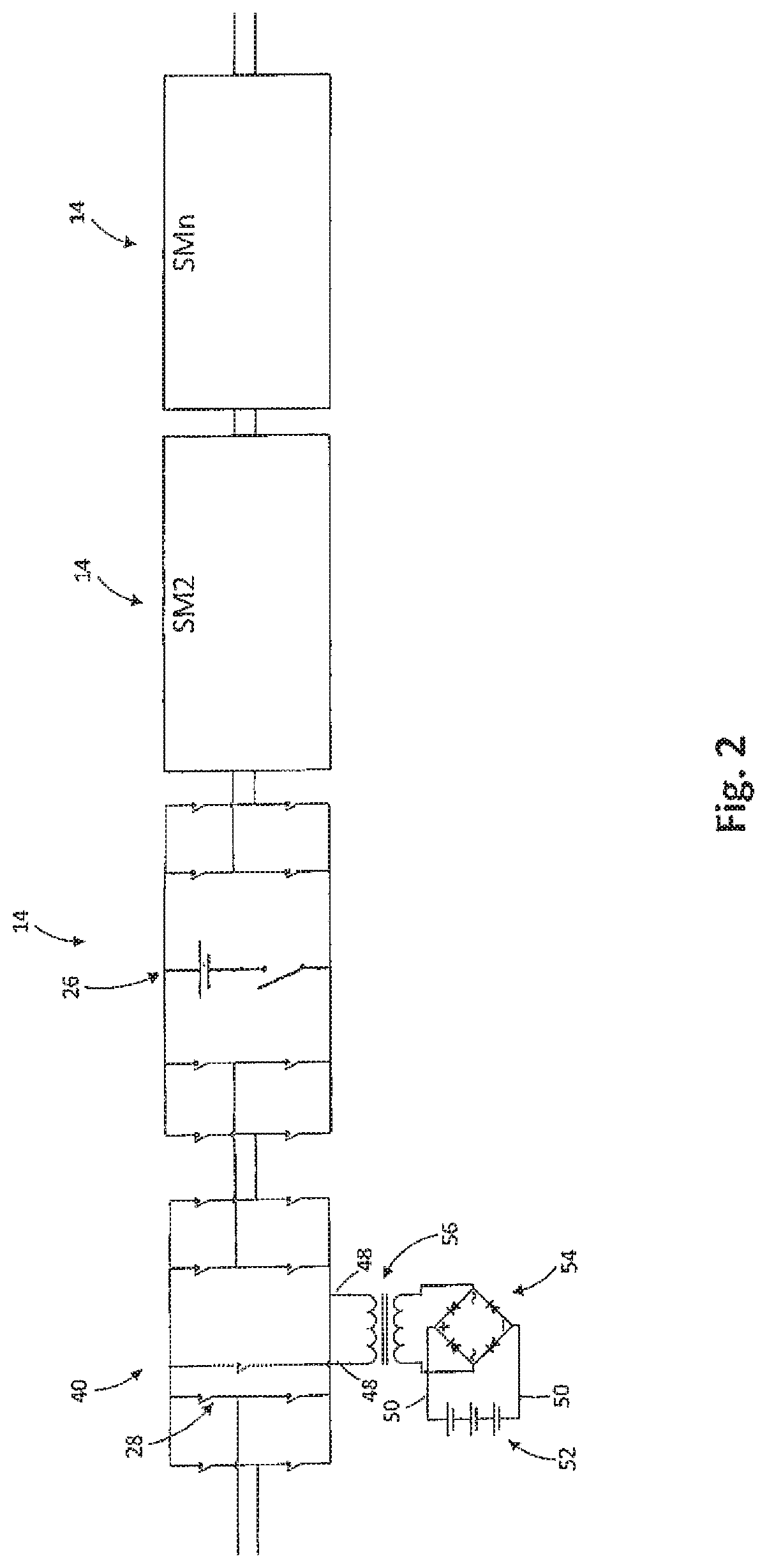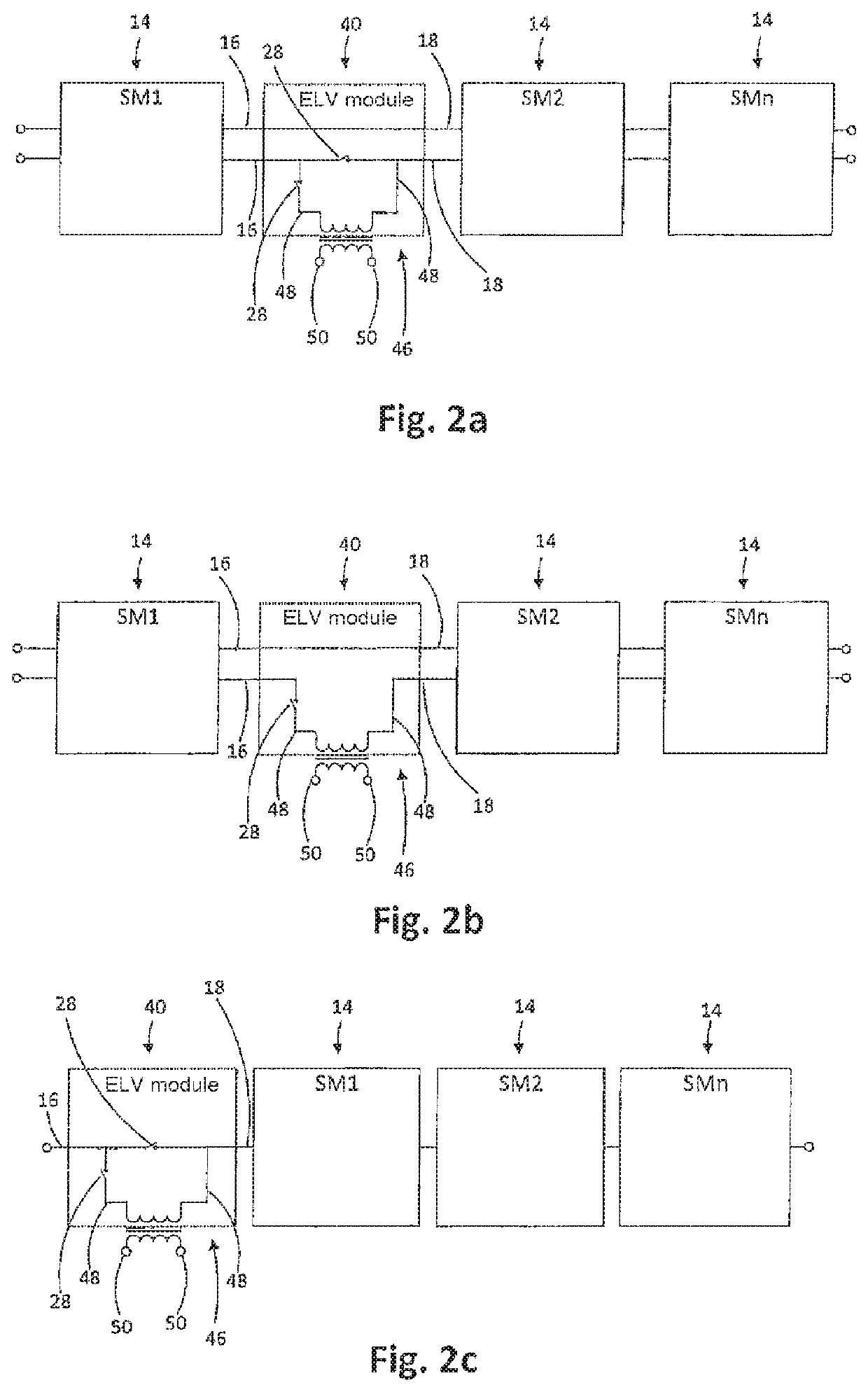Low-volt decoupling from a modular energy store converter system
a converter system and low-voltage technology, applied in the direction of dc-ac conversion without reversal, battery/fuel cell control arrangement, transportation and packaging, etc., can solve the problems of loss, damage to the cells, and the operating point of the system either cannot be adapted, so as to achieve efficient supply of extra-low voltages without limiting the intended functionality
- Summary
- Abstract
- Description
- Claims
- Application Information
AI Technical Summary
Benefits of technology
Problems solved by technology
Method used
Image
Examples
Embodiment Construction
[0110]For the purposes of promoting an understanding of the principles of the invention, reference will now be made to a preferred embodiment illustrated in the drawings, and specific language will be used to describe the same. It will nevertheless be understood that no limitation of the scope of the invention is thereby intended, such alterations and further modifications in the illustrated apparatus and such further applications of the principles of the invention as illustrated therein being contemplated as would normally occur now or in the future to one skilled in the art to which the invention relates.
[0111]FIG. 1 shows an exemplary embodiment of a modular energy store converter system to according to one embodiment of the invention. The system to comprises a converter arm 12, which comprises a plurality of standard modules (SM) 14 connected in series. Although this is not shown in FIG. 1, it goes without saying that the number of standard modules 14 in a converter arm 12 in pr...
PUM
 Login to View More
Login to View More Abstract
Description
Claims
Application Information
 Login to View More
Login to View More - R&D
- Intellectual Property
- Life Sciences
- Materials
- Tech Scout
- Unparalleled Data Quality
- Higher Quality Content
- 60% Fewer Hallucinations
Browse by: Latest US Patents, China's latest patents, Technical Efficacy Thesaurus, Application Domain, Technology Topic, Popular Technical Reports.
© 2025 PatSnap. All rights reserved.Legal|Privacy policy|Modern Slavery Act Transparency Statement|Sitemap|About US| Contact US: help@patsnap.com



